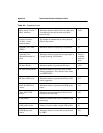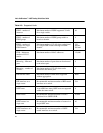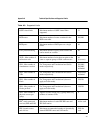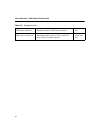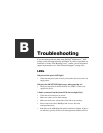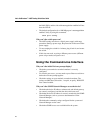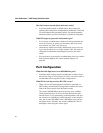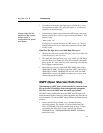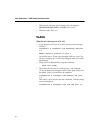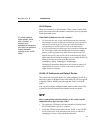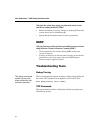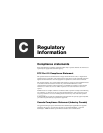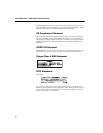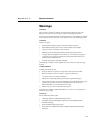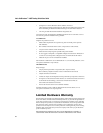
Appendix B Troubleshooting
443
• To establish a full-duplex link either force it at both sides, or run
autonegotiation on both sides (using full-duplex as an advertised
capability, the default setting).
Always verify that the
switch and the network
device match in
configuration for speed
and duplex.
• A mismatch of duplex mode between the 480T routing switch and
another network device will cause poor network performance. View
statistics using:
show port rx
If it displays a constant increment of CRC errors, it is a duplex
mismatch between devices, rather than a problem with the 480T
routing switch.
What if no link light shows on a 1000 Mbps fiber port?
• Check to ensure that the transmit fiber goes to the receive fiber side
of the other device, and vice-versa.
• The switch has autonegotiation set to
on by default for 1000 Mbps
ports. Set these ports to
auto off (using the command configure
port <port #> auto off) if you are connecting to devices that
do not support autonegotiation.
• Ensure that you are using multi-mode fiber (MMF) when using a
1000BASE-SX GBIC, and single mode fiber (SMF) when using a
1000BASE-LX GBIC. 1000BASE-SX does not work with SMF.
1000BASE-LX works with MMF, but requires you to use a mode
conditioning patchcord (MCP).
OSPF (Open Shortest Path First)
When setting up OSPF areas, it indicates the area must be in an
IP-type format. That differs from some non-Intel equipment.
How do I convert an OSPF area into an IP-type format?
The 480T routing switch must have the OSPF area ID input in IP
dotted decimal notation. Some non-Intel equipment may show this as
a whole number. To convert OSPF whole numbers to dotted decimal
notation:
• Convert the non-IP type format using a decimal to binary
converting method, for example, to convert
400 decimal into
binary (110010000). The binary number needs to show 32 digits,
representing the digits of the 4 octets in the IP-type format.
110010000 binary = 00000000.00000000.0000001.10010000 as
broken into octets.



